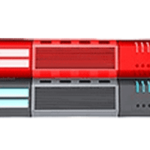
Shared Hosting vs VPS
Shared Hosting and VPS (Virtual Private Server) are two popular options that cater to different needs and budgets within Website Hosting. Which one should you choose?

Shared Hosting and VPS (Virtual Private Server) are two popular options that cater to different needs and budgets within Website Hosting. Which one should you choose?

NetService Hosting and Domain Services offers excellent quality shared hosting and many cost-free bonuses, which will help you create your website very quickly.

A Google Business Profile (GBP) is a free business listing from Google. It allows you to provide details and photos of your business, including your location, website address, services and products.

There are two major search engine marketing strategies in use today: SEO (search engine optimisation) and PPC (pay-per-click).

The process of designing a website is complex and ever-changing, making it impossible to provide a fixed price for a new website design. Every website and every business is unique.

NetService has designed a new website for a local carpenter. The customer wanted an online presence to increase business and to showcase his portfolio.

Why Do We Use WordPress? WordPress is no longer just a blogging platform. It has evolved throughout the years into a versatile content management system (CMS).
Contact Details
Tel: 01737 902302
Mob: 07712 871167
Copyright 2024 – NetService Web Design – All Rights Reserved | Terms and Conditions | Privacy Policy | Sitemap